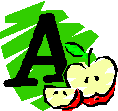Be aware of its connotations and associations?
 As a native speaker, I’d have trouble with some of the above points for quite a few items in my vocabulary.
Needless to say our students have quite a job on their hands.
As a native speaker, I’d have trouble with some of the above points for quite a few items in my vocabulary.
Needless to say our students have quite a job on their hands.
Words are like telephone numbers, credit card numbers, car licence plate numbers, bank account PIN numbers, the more we
see them, repeat them and use them, the more we’re likely to remember them. If we recycle vocabulary in interesting
and imaginative ways for our students, some of it should, eventually, stick ( The ‘Pebble-dash Approach’? ).
In the wake of a general shift in EFL from a grammar to a vocabulary focus, the following ideas may come in handy.
These activities may be of use to teachers whose students would rather take a dictionary on holiday with them than a grammar
book.
: Lexical items could be a collection of verbs, phrasal verbs, nouns, adjectives, expressions,
idioms, vocab. from text etc.
2. Back To The Board
Divide the class into two teams (A and B).
Chose a S from each team to move his/her chair so that the SS have their backs to the board and are facing their team mates.
T writes a word or phrase on the board and both teams try to describe it to their team mates at the same time.
The first to correctly reproduce what’s on the board gets a point. Insist on passable pronunciation.
Rub the word out and put another one up. Keep the pace snappy. Rotate the SS periodically so that everyone gets a chance
in the team ‘hot seat’.
Deduct points for team members saying the word as soon as you’ve written it (it’s easily done), and for team
reps. turning round to look at the board and using mirrors, L1 etc.
3. Board Run
Works well with kids and company executives.
Put Ss in teams (two, three, four depending on class size) and line them up facing the board. Give the first S in each
line a board pen.
T describes a word or phrase. The first S to run to the board and write the word legibly scores a point. Tripping, holding
and biting is allowed, but the word/phrase must be written correctly.
4. Chain Story
T writes vocab. To be revised on the board. T uses the first item of vocab. In a sentence to start off a story. SS continue
the story around the class using vocab. From board in( or out of ) sequence.
4. Waiting For Late Arrivals
Just write a list on the board and get SS to define the word, translate it to L1 or put it in a sentence.
If your class really dribbles in slowly, dictate the list for spelling and get the SS to dictate back to another SS who
writes the list on the board for you.
5. Click Your Fingers
Get SS on their feet and in a circle. Start clicking or clapping, and on the third ‘beat’
Nominate a S who has to say a word from last lesson.
This works best with groups of words, e.g. Professions, Forms of transport, Phrasal verbs, Sports, Words beginning with
‘P’ etc.
When a S can’t provide a word within reasonable hesitation time ( a second?), or repeats a word already said by another
S, he/she is ‘out’ and sits down.
Who’s left standing at the end?
6. Throw Them Away
Similar to 2, but done in pairs not open class.
Give SS slips of paper with vocab on. SS define words to their partner, and throw them away when their partner guesses.
The first S to throw away all their slips of paper wins.
I find there’s a great sense of satisfaction to be had crossing out or throwing away words already learnt. (Peering
through pencil marks and searching the rubbish bin is another matter, but all part of the process.)
7. Vocab. Box
Speaking of slips of paper, why not start a vocab. box at the beginning, or in the middle, of the course?
Choose a S and give him/her the responsibility of writing down on slips of paper all new words during the lesson. At the
end of the lesson put the words/phrases in a box or bag and next lesson the responsibility passes to another S.
If a S misses a lesson, the box can be checked for any new words.
SS can see their vocabulary expanding. If not in their heads, at least in the box.
Periodically vocab. can be revised using one of the activities here, or your own, or give a formal test.
Decide if the SS need to write phonetic transcriptions of the word, word group (noun, adjective. verb etc.), dependent
prepositions, context sentence, prefix/suffix etc.

